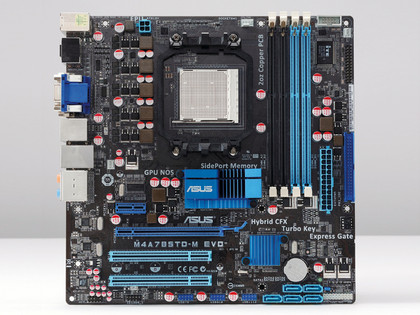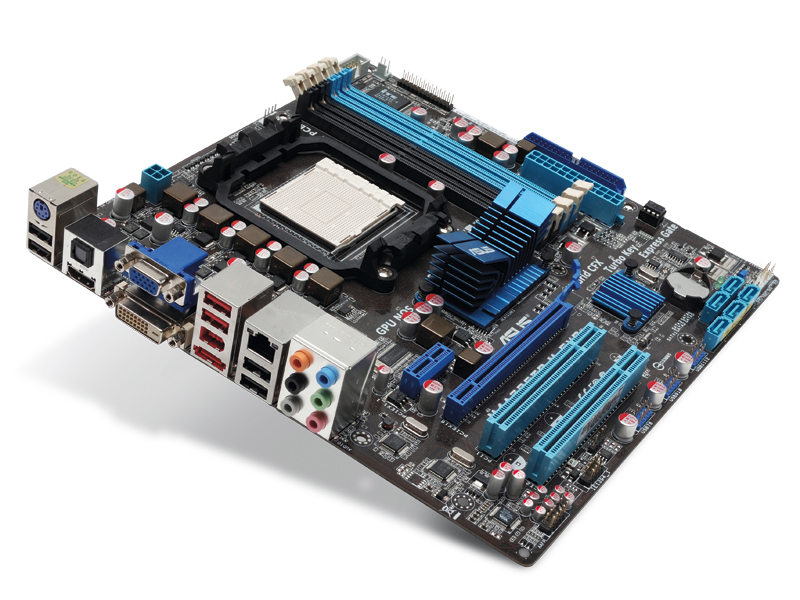TechRadar Verdict
Good performance and OC headroom, but lacks the latest storage and USB interfaces.
Pros
- +
Solid all round performance
- +
Strong overclocking headroom
Cons
- -
No USB 3.0 or SATA 6Gbps
- -
Looking a little dated
Why you can trust TechRadar
Slapping a new brand name to give an old chip a leg up is a popular ruse in the PC industry. Do not, therefore, assume that the Asus M4A785TD-M EVO and its AMD 785G northbridge is necessarily old hat.
For the most part, it's identical to the supposedly newer 880G found in Gigabyte's competing 880GMA-UD2H.
The graphics cores in both, for instance, are effectively the same Radeon HD 4200 DirectX 10.1-class architecture. You get carbon-copy AMD Avivo HD video features and 40 shader cores with this slightly older Asus board. Likewise, AMD Hybrid Graphics is supported by both.
However, where the two diverge and the Asus M4A785TD-M EVO arguably falls behind involves the companion chips that provide additional functionality.
While the Gigabyte board gets the latest SB850 southbridge chip and NEC's USB 3.0 controller, Asus makes do with the older SB710 southbridge. USB 3.0 and SATA 6Gbps are not part of the package.

In raw performance terms, the gap between the Asus M4A785TD-M EVO and supposedly newer and fancier boards, such as Gigabyte's 880GMAUD2H is measured in microns. Whether it's video encoding, professional 3D rendering or playing games courtesy of an add-in graphics cards, there's near as dammit no difference. The same applies when using the onboard Radeon HD graphics.
In both cases, it's a mixed bag of feeble 3D performance and excellent 2D hardware acceleration. At least all the important video codecs are supported ensuring buttery smooth playback of high definition video, whether stored locally or streamed from the net, without stressing the CPU.
Likewise, both boards offer support for AMD's Hybrid CrossFireX technology enabling users to switch on the fly between beefy but power-hungry discrete graphics and the more efficient integrated 3D core.
OC headroom
Shift the focus to overclocking, however, and the older Asus M4A785TD-M EVO actually carves out a small advantage achieving 270MHz to the Gigabyte's 260MHz. So much for progress.
Elsewhere, however, the Asus doesn't have it all its own way. Part of the problem is the fact that quad-core Intel chips have the edge on the fastest six-core AMD chips. Intel's six-core models are in a class of their own.
Exactly how important high bandwidth interfaces, such as USB 3.0 and SATA 6Gbps will be during the lifetime of a board bought today is hard to judge. Currently, there are few available components and peripherals that support either standard.
However, you can have both with the Gigabyte board for just eight pounds extra and otherwise offers a very similar package. So, why take the risk?

Technology and cars. Increasingly the twain shall meet. Which is handy, because Jeremy (Twitter) is addicted to both. Long-time tech journalist, former editor of iCar magazine and incumbent car guru for T3 magazine, Jeremy reckons in-car technology is about to go thermonuclear. No, not exploding cars. That would be silly. And dangerous. But rather an explosive period of unprecedented innovation. Enjoy the ride.
